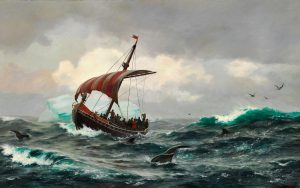
Gudrid Thorbjarnardottir: Transatlantic Traveler of Viking Frontiers
During her lifetime Gudrid Thorbjarnardottir (Guðríður Þorbjarnardóttir, 980-1050), the daughter of Icelandic chieftain, Thorbjorn of Laugarbrekka, Iceland, travelled to Greenland, North America, Norway, and perhaps even Rome as a pilgrim. Legend has it her father would not permit her to marry an early suitor because he was the son of a slave.
Read More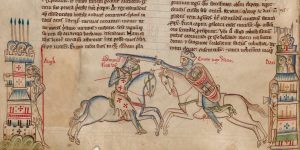
Cnut the Great Reforges his Father’s North Sea Empire, 1014-1028 (Part II)
When King Sweyn Forkbeard suddenly died in early 1014 after becoming the first Danish King of England and first ruler of the North Sea Empire, his son Cnut (994-1035) had to overcome the forces working to dismantle what his father achieved through victory in battle and alliance with the Jomsvikings – a military order based on the southern shore of the Baltic Sea.
Read More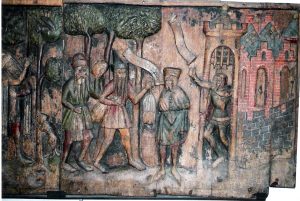
“Beyond the Volok”: The Medieval Frontier and Chronicle of Novgorod, 1016-1471 (Part One)
In the centuries prior to Tsarist Russia’s rise to power the two principal centers connecting the Viking and Byzantine worlds were Novgorod and Kiev. Generally referred to as the Kievan Rus’ – the ascendancy of Novgorod within this loosely connected riverine federation stretching between the Dnieper River and Lake Ladoga’s tributaries to the Baltic Sea began during the reign of Yaroslav the Wise (c. 978-1054) – who became Grand Prince of Kiev in 1019 after ruling Novgorod and forming alliances with Scandinavian Vikings (Varangians).
Read More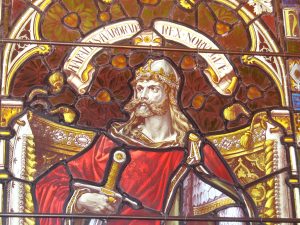
The Viking King Harald Hardrada: Eastern Exile and Mercenary Life, 1030-1042 (Part I)
Harald Sigurdsson (1015-1066), also known as Harald Hardrada (“hard”) was one of the most fabled kings in Norwegian history. Harald and his half-brother Olaf Haraldsson – who later became Saint Olaf – fought together in 1030 while trying to reclaim the throne from the Danish king Cnut the Great – who made an alliance with the jarls of Lade in the Trondheim region.
Read More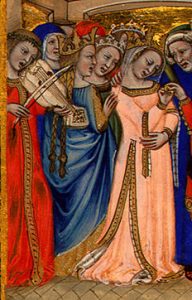
Medieval Dresses: The Mirror of Medieval Society
There are many ads on the internet offering medieval dresses for sale. That means they are quite popular and have their fans that like to buy them and wear them on certain occasions. What are the reasons for such a fascination with medieval dresses? Well, everyone has their motives, but it’s definitely interesting to immerse in the medieval era and see that medieval dresses weren’t just clothes. Wearing a certain dress meant much more. A dress was a status symbol that defined a woman and who she was. Wearing a certain dress meant showing within which class you belong and how rich and powerful your family was. But, “medieval fashion” was also a reflection of the whole political and social situation during the Middle Ages.
Read More